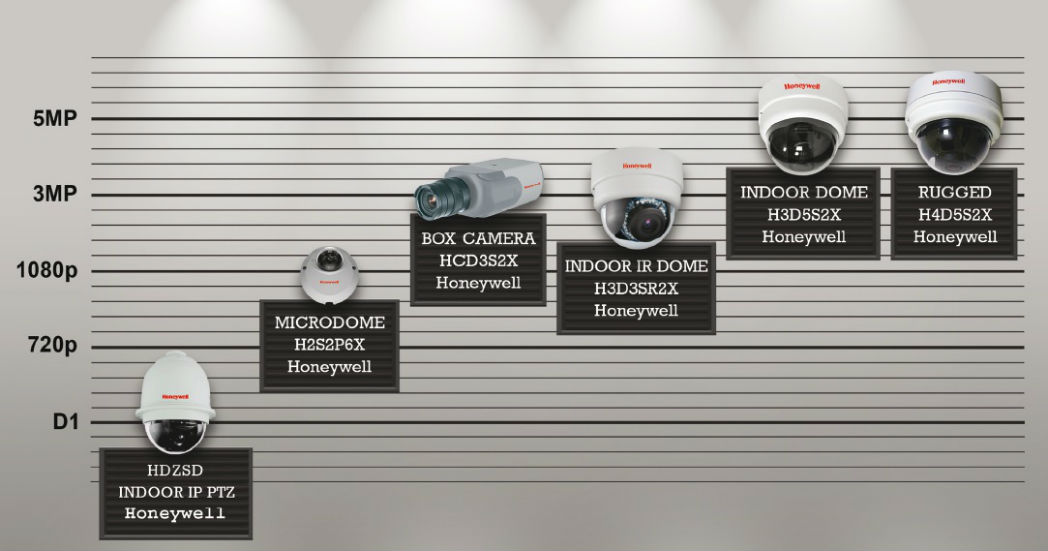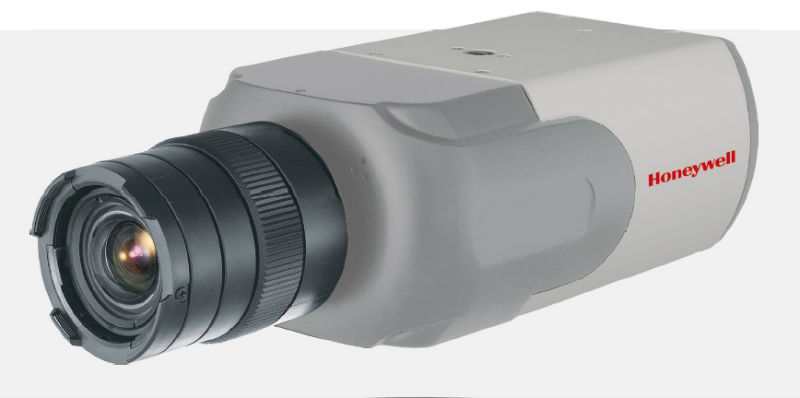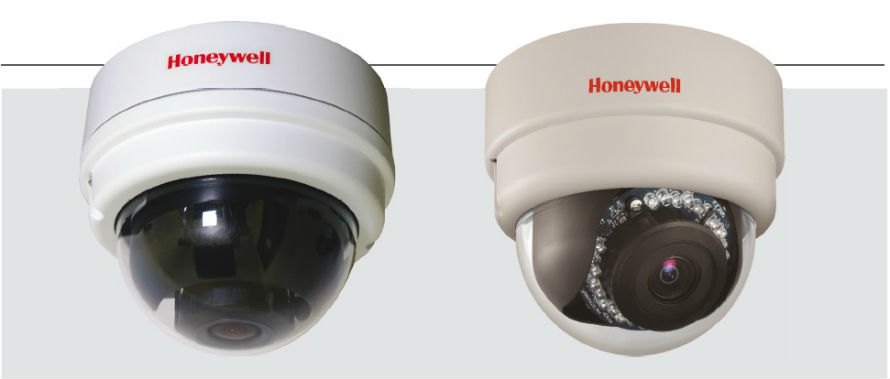IP: It’s a Marathon, Not a Sprint
By Jeremy Kimber, Honeywell Security Group
The rise and rise of IP security continues apace. It is increasingly the technology of choice for organisations looking to implement a system that can protect its people and assets, and it’s easy to understand why. Its benefits are commonly acknowledged – a unified view of a site’s security infrastructure, easier integration between access control, video and intruder alarm systems, remote web-based or mobile access, compatibility with building management systems and HR systems – and a world in which IP systems achieve close to 100 per cent penetration increasingly feels like an inevitability, rather than a possibility.
However, there is a potential stumbling block in IP’s path to total dominance; hype. It’s a hurdle that often appears when a technological revolution is in full swing. It has happened to IP in much the same way it is happening to ‘cloud’, ‘big data’ or ‘mobile’. Suddenly, these technologies are seen as a panacea, a silver bullet, the answer to every question. IP technology has huge strengths, but if we overpromise, specifying it for every customer irrespective of context, we risk undermining it. Worse, we risk damaging confidence in it. Let me elaborate further.

Over-promising
One of the best ways in business to delight customers is to ‘under promise, and over-deliver’. Over-selling the benefits of a product or service, then failing to meet the customer’s falsely inflated expectations negatively impacts an individual or company’s reputation, increases customer churn and, crucially, leads to lost revenue. In the past we have seen this with video analytics systems. This is now a trap installers and manufacturers risk falling into in today’s IP market. Yes, many IP product ranges on the market today are capable of incredible performance and packed full of cutting-edge features. However, there is a critical requirement to understand the customer’s unique set of requirements and the environment in which the products will be used.
Under-delivering
Let’s take a ‘for instance’. Honeywell recently completed a number of mega budget IP projects for organisations based in Qatar, Oman and Kuwait. In each instance, the customer invested a large sum in designing a state-of-the-art IP security system from scratch with each component and the system network purchased to the highest specification possible. As you might expect, the high-definition IP cameras are capable of delivering to their full specification since the whole network is brand new, and both it and the system have been designed to provide the end users’ security staff with a ‘bells and whistles’ solution.
But imagine a slightly different scenario; maybe a retail organisation in Europe with a budget a tenth of the size, looking to upgrade its system and purchasing a set of impressive-looking IP cameras to plug into a legacy network and recording hardware from a different supplier. The system might have an old hybrid DVR and network limitations, rendering it incapable of getting 100 per cent out of the IP cameras. Cue unhappy customer. The message here is simple; providing an IP solution – or any solution for that matter – isn’t a case of reading off an impressive list of product specifications. It’s about recognising the customer’s unique circumstances, understanding their challenges and limitations, and selling and delivering a realistic vision for them.

A matter of trust
This matters. If manufacturers simply extol the virtues of a product’s spec sheet – a product which then goes on to underperform when it is installed in the wrong context – we will undermine installer and end user confidence in IP. Equally, for installers, while it’s tempting to specify multi-megapixel IP cameras with their many advantages to a customer, the sale must only be made with a full knowledge of the customer’s set-up and an honest appraisal of how the product will perform in situ. The history books are littered with examples of technology that suffered simply because people didn’t trust it. Let’s make sure IP doesn’t join the list.
Life in analogue yet
Another important consideration is the enduring power of analogue solutions. For customers with smaller budgets or straight-forward objectives for their security system, analogue is still often the perfect solution. Let’s take a small retail outlet with 10-15 staff, a stockroom, staff room and shop floor. In this context, is it really in the best interests of the customer to rip out their existing system and replace it with something ‘all singing, all dancing’ that requires network upgrades, integrates with their (non-existent) HR and (non-existent) building management system, or provides their security team (a security guard) with a forensic capability he may not have the ability to use effectively? Possibly not. Specifying IP in the right circumstances is critical – specifying it every time will lead to many security managers questioning its value.
Hybrid: The third way
Let’s consider another scenario. Imagine a university with 20 or 30 different campus buildings; a collection of residential buildings, a host of different departments and lecture halls, sports facilities, shared public areas like libraries, theatre halls, bars or car parks. The campus’s security team might well have an array of different analogue cameras installed in different buildings and areas, and – to say nothing of squeezed budgets in the education sector – would likely not want to replace every piece of security equipment in order to benefit from IP. They might want a single view of all video through a common video management system based on NVRs or COTS servers, or even a video analytics system, plus opportunities for enhanced integration to access control systems, but the idea of ripping out their entire old infrastructure isn’t even worth considering.
In this context, hybrid solutions can be the perfect way of managing the migration to IP - introducing the benefits of IP without major upfront cost or potential risks. By upgrading the head end management solution and replacing DVR’s with NVR’s, an installer can then use encoders to bring existing analogue cameras into an IP system, capturing and managing the information far more effectively, in addition to introducing higher spec cameras, where appropriate or affordable, and enhancing options for integration to access or use of technology like video analytics. Further it’s an opportunity for installers to win over security managers before asking them to sign huge cheques. It’s a ‘try before you buy’, that is guaranteed to, over time, deliver a much higher number of IP converts in a much shorter space of time than aggressively selling it to every customer in every context. The bottom line is this; IP sells itself. The key is giving end users the confidence to embrace it without a massive capital outlay.

Education, education, education
At Honeywell one of our biggest areas of focus is delivering bespoke training on IP solutions to installers across Europe and Middle East markets from our training centres of excellence in the UK, the Netherlands, Germany and Dubai, and putting feet-on-the-street in the form of sales and technical support teams. Why? Because we understand that another big barrier to the continued upward trajectory of IP adoption is education. For some installers, it’s tempting to run from IP because of its perceived complexities. Unlike a traditional closed circuit analogue solution – which installers have grown up with and instinctively feel comfortable with – an IP solution requires both a different technological approach and far more interaction with end user IT departments as well as their security teams. Since the solution will interact with a company’s IT infrastructure of servers and networks, implementing it can be a daunting task.
Grasping the nettle is important for a number of reasons; the most compelling is cold, hard cash. Installers that don’t invest in educating their employees on how to install IP systems are missing out on pitching a potentially lucrative and rapidly growing revenue stream to commercial and public sector organisations. Equally, those that under-invest risk sending out engineers with under-developed skill sets to deploy solutions that are outside of their comfort zone. This can lead to errors, constant call backs which kill any profit on the job and – once again – a disappointed customer whose faith in both the installer and in IP as the appropriate solution for them, is dented.
In short, while the IP market is booming there are still challenges that lie in wait. As an industry, selling solutions not spec sheets, investing in training and development across the board and winning customers around to the benefits of IP by introducing hybrid solutions must be the big priorities for the coming years. Retaining end user support for IP depends on it.



